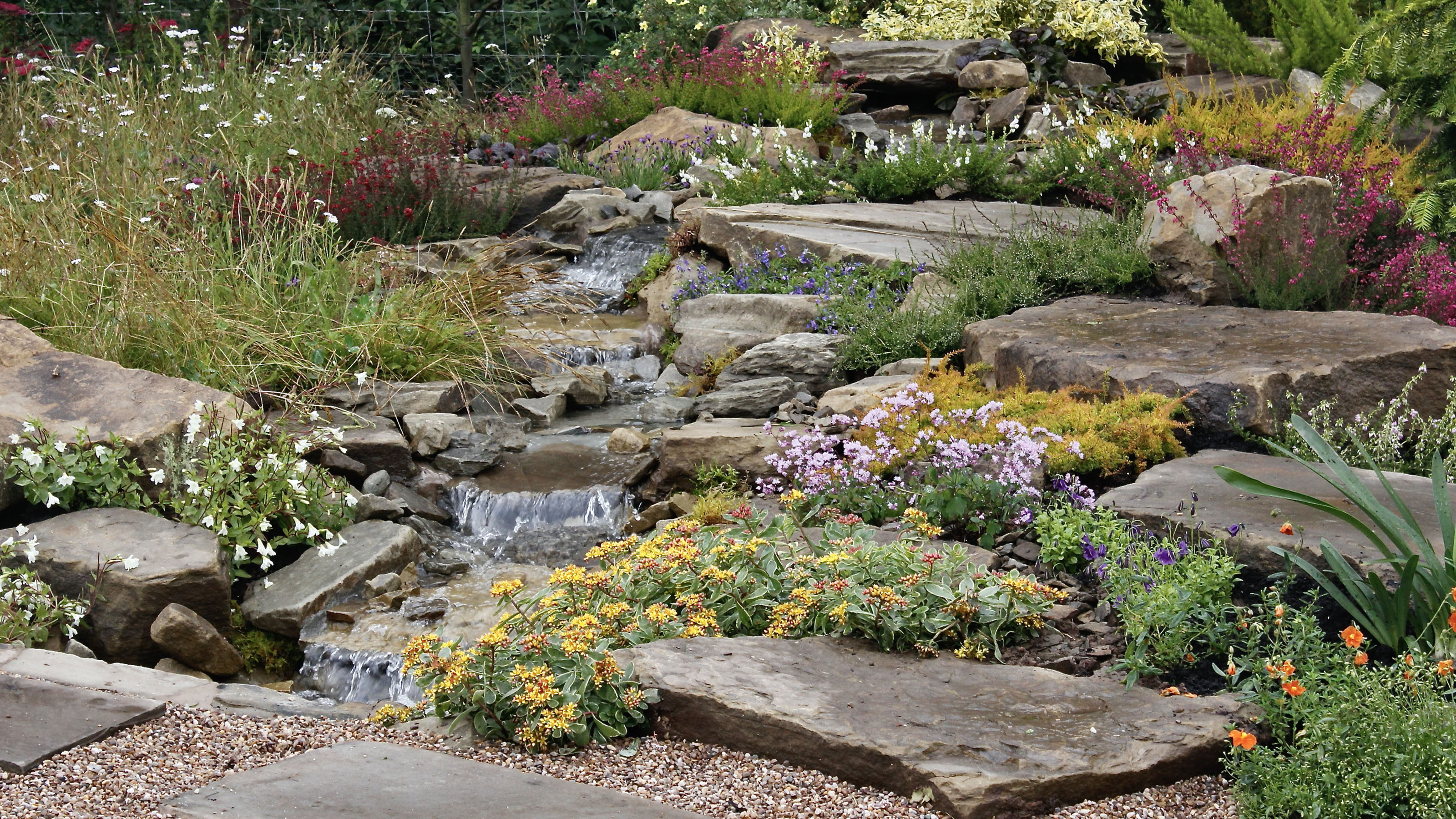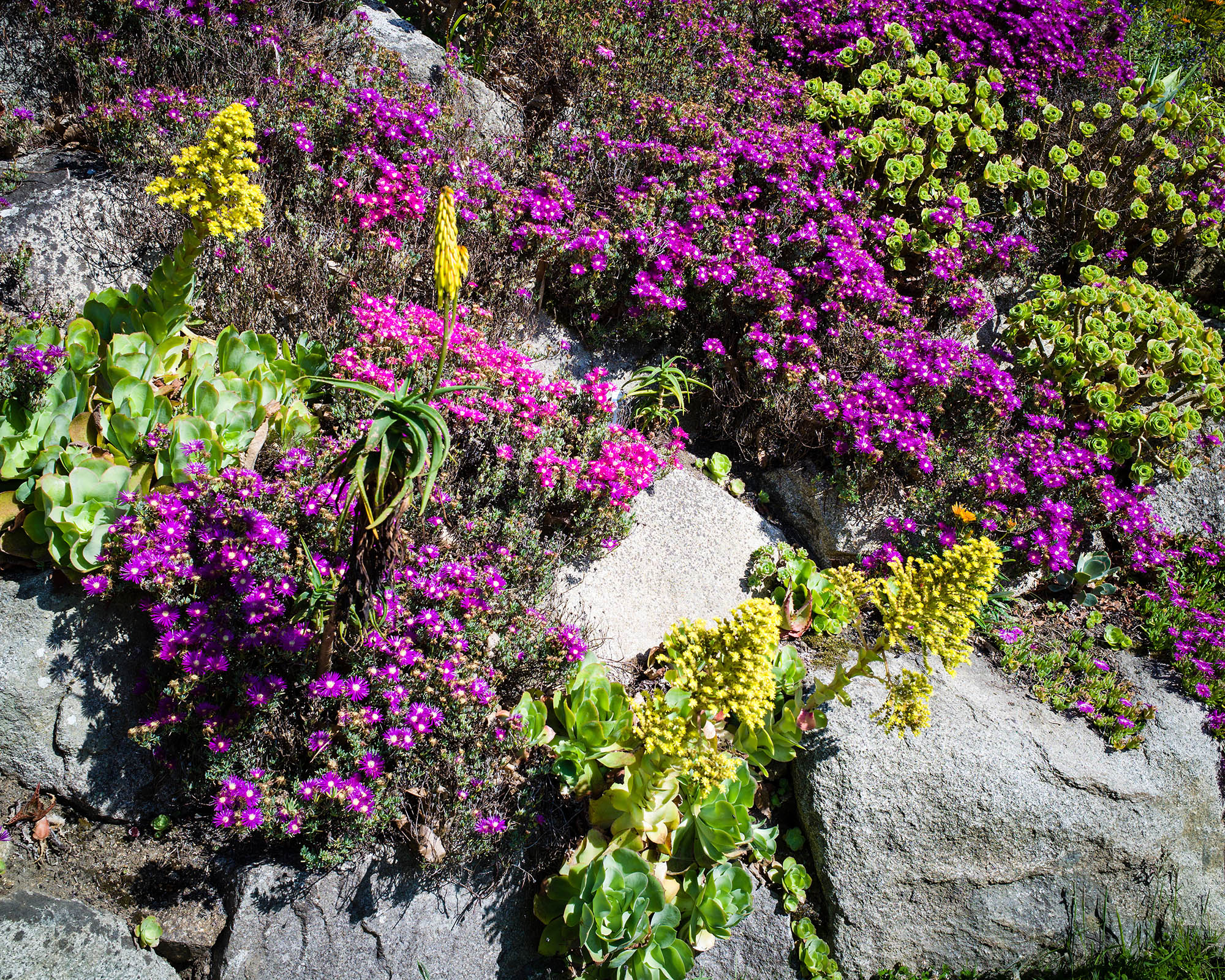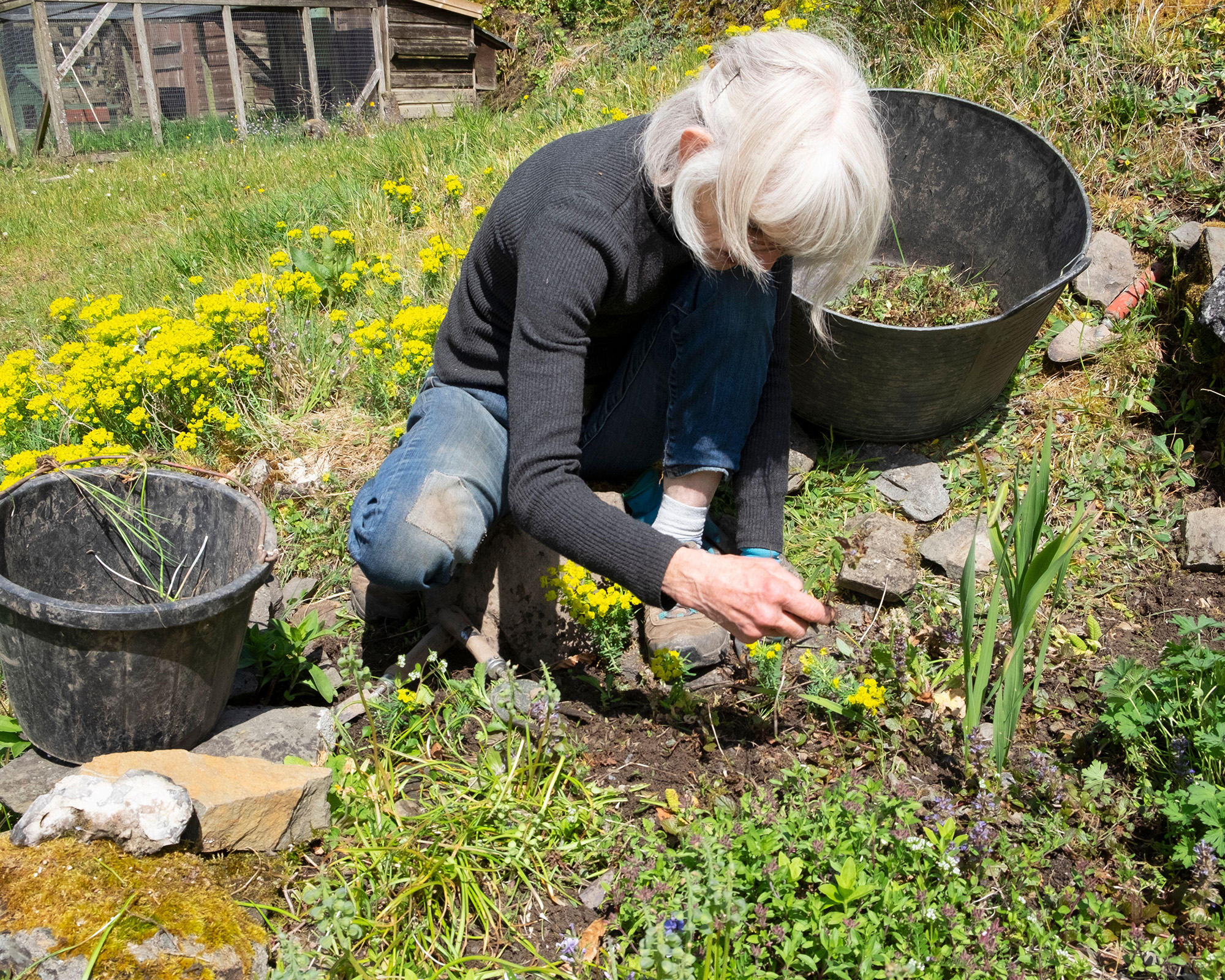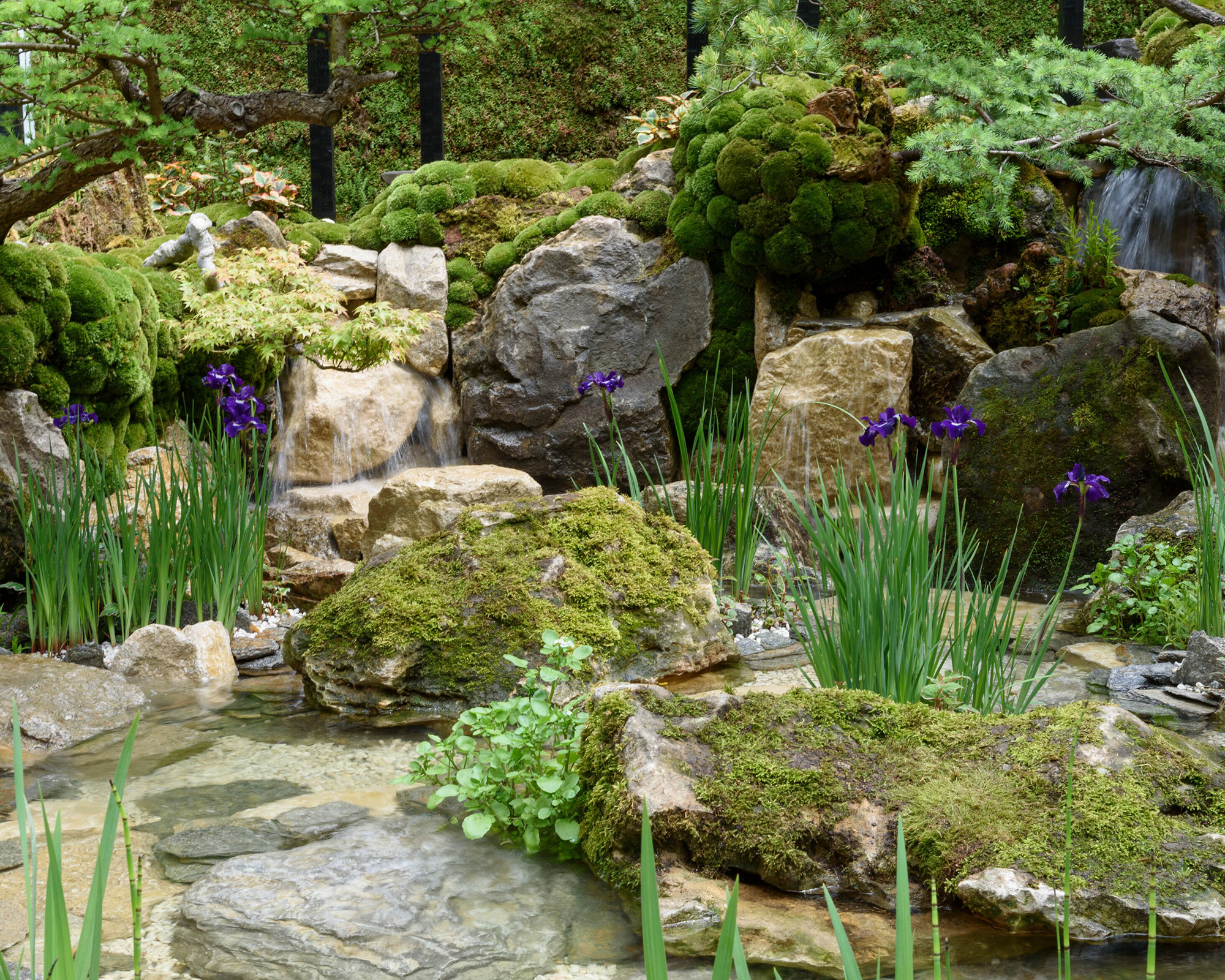How to build a rock garden: follow our simple guide
Learn how to build a rock garden and create a beautiful rugged feature that can provide a home for a wide range of colorful plants


By learning how to build a rock garden you can bring a slice of rugged terrain and provide a home for a wide range of colorful plants. A rock garden is simply an area made to look like a rocky outcrop, planted with a range of alpines, bulbs, small perennial plants and tiny trees. Popular in the Victorian era, these gardens allowed plant hunters of the time to display the beautiful alpine species they had discovered in mountainous regions around the world.
Most were installed in the grounds of their large stately homes, but in the 1970s smaller features suitable for the average backyard became a must-have for on-trend gardeners.
Today, we're happy to say that rock gardens are back in fashion! As people look for ways of making their plots more interesting and packing them with an array of colorful plants.
Learning how to build a rock garden involves choosing the right place, sourcing appropriate materials and getting your planting set into your landscaping ideas in the correct way. Then there's aftercare, but really part of the appeal of rock gardens is that they are so low maintenance that any care is minimal.
Learn how to build a rock garden in 6 easy steps
Rock gardens can be large or small and you can even squeeze one on to a patio by creating a small feature in an old sink or raised planter.
Versatile and easy to make, they will allow you to showcase tiny alpines and other dwarf plants that may be overlooked in a main flowerbed or border. Follow these easy steps for how to build a rockery.
1. Choose a suitable site in your plot
'The best place to site your rockery is in area that receives plenty of sunshine, away from large trees that may shade the area and cover the site with leaves in autumn,' says Christopher Lane, Gardens and Outdoors Manager at the National Trust’s Emmetts Garden in Kent, which features a famous rock garden created by American geologist Charles Watson Boise.
Rock garden plants are ideally suited to free-draining soil types, too, so if yours is moisture-retentive, consider building your rock garden on a slope where drainage will be better.
If your soil is already free-draining, you can also make a rock garden on flat surface to evoke the rock-strewn screes at the base of a mountain, but avoid frost pockets at the bottom of a hill, which could limit your plant choices.

2. Plan your design
Whether you're a fan of modern rock garden ideas or want something slightly less contemporary, you can find inspiration for your own design by looking at images of natural mountainsides, or, better still, visiting a mountainous area close to your home that features exposed rocks.
'Take some photographs or make sketches,' advises Christopher Lane. 'And pay particular attention to the type of rocks and diversity of sizes, and how they are sitting in the landscape. You can then simply downscale to fit your particular garden design ideas.'
You will also see how the planting on a mountain is often nestled into the nooks and crannies between the rocks, which afford them some protection from high winds and intense sunlight, while also providing a little shade at the base to protect the roots from drying out.

3. Select your rocks and other materials
Sourcing your materials for any type of landscaping ideas with rocks from a local quarry can help to minimize transportation costs, thereby lowering their carbon footprint, and they will also look more naturalistic in gardens with views of the surrounding environment.
'You can often choose specific pieces from a local stone merchant or quarry to match your exact needs,' adds Christopher. However, real stones can be expensive, so factor the cost in before you start.
If prices are too high, salvage merchants may have cheaper stones for sale or check Freecycle or Facebook Marketplace – rock gardens are not for everyone and you may find someone only too pleased to offer you theirs.
You will also need a selection of smaller rocks and pebbles to complete the look, plus more compact materials can be better suited to the size of scale of small rock garden ideas.

4. Prepare the ground
Before you start putting your rocks in place, remove all the weeds, digging out the roots of dandelions, brambles, dock and other pernicious types and hoeing off annuals.
Add a 6in (15cm) layer of rubble, broken bricks or pea shingle to create a free-draining base, and cover this with upturned grass turves or permeable landscape fabric to prevent it mixing with the compost layer above.
If you have heavy clay soil that does not drain well, dig in some grit before building your rock garden on top of it, add a 2in (5cm) layer of well-rotted garden compost or manure over the surface, which will help to improve the drainage.
Also consider installing your rockery on a slope so that water runs away from the site.

5. Create the main structure
It's relatively easy to create a rock garden on a small scale, but seek help from a professional landscaper if you have a larger area to cover or boulders that are too heavy to move manually.
Here's how to position the main materials in your rock garden.
- Position your largest stones so that they look natural and any horizontal lines in them run in the same direction. Dig out depressions in the grass and rubble layer for the stones to fit into, cutting holes in the landscape fabric first if you are using it.
- Bury the stones so that the lower third is below the surface and tilt them backwards slightly to create a naturalist effect before firming them in place. Place smaller stones in the same way, to create a rocky outcrop.
- Add a 4in (10cm) layer of compost mix between the stones, with deeper areas of 6–8in (15–20cm) where you plan to plant trees or shrubs.

6. Plant up your rock garden
Buy a mix of sun-loving plants for the brightest areas and plant them on the sunniest sides of the rocks, using the stones as backdrops to show off their shapes and forms. You can also include a few shade loving plants in areas on the north side of the rocks and where other plants block the sun for part of the day.
Shooting stars (Dodecatheon), heucheras, lewisias and saxifrages will all cope with some shade. Also add a few bulbs for spring such as dwarf narcissi, grape hyacinths (Muscari) and even different types of tulips such as Tulipa humulis and Tulipa clusiana ‘Peppermintstick’ to inject extra color early in the year.
'Remember that many low-growing ground cover plants will spread over time, so don’t be tempted to cover the whole site to begin with,' says Christopher Lane. 'I would aim to leave around 40 to 60 per cent of the rock or scree still exposed and unplanted.
Follow these simple planting tips when thinking about how to build a rock garden:
- Set out your plants so the tall ones won’t shade the smaller ones and you achieve a balanced design.
- Water plants well before planting and dig a hole for each of them a little wider and about the same depth as the root ball. Aim to plant them at the same depth as they were in their original pots, making sure that the stems and leaves are not buried under the compost, which can lead to them rotting.
- Firm in carefully around the stems with your hands and water in gently with a watering can fitted with a rose head.
- Add a 1in (2.5cm) layer of horticultural grit, gravel or stone chippings over the surface to help keep the stems of the plants dry, retain sufficient moisture in the soil and reduce weed growth. You can also add a few pebbles for extra texture and interest.

Low maintenance shrubs and compact trees for small gardens can be used to add height and structural interest, but be sure they are kept in check as some could grow to shade out lower-growing plants over time.' Good choices include the Japanese cedar Cryptomeria japonica 'Vilmoriniana', spreading juniper Juniperus procumbens 'Nana' and the little Japanese maple Acer palmatum 'Red Pygmy', which will all add height without growing too large.
Luke Whiting, who runs the alpine specialist nursery D’Arcy & Everest with his wife Laura, says that although rockery plants like free drainage, they also need some moisture to thrive. 'The best tip is to think about keeping the roots of your plants cool and moist. These plants generally come from mountainous regions, which are easy to replicate in most gardens. Simply use a mix of crushed granite, soft sand and peat-free multipurpose compost.' However, just as the plants on a mountain would never be subjected to waterlogged soil, ensure yours never sit in soggy areas where water puddles after it’s rained.

Maintaining your rock garden
Now you've learned how to build a rockery, it's worth thinking about how to keep it looking in great shape.
Luke Whiting says that maintenance is generally very low: 'If you create a rock garden with the recommended compost mix, it shouldn’t need much aftercare. Just keep watering plants regularly until their roots have established and make sure you get rid of weeds when you see them. They are usually easy to pull out of the loose soil by hand.'
Try to avoid using chemical herbicides which pollute the environment and applying them is often just as time-consuming as hand-weeding.

Does a rock garden need soil?
While some alpines may thrive in a layer of horticultural grit, the widest selection of plants, including small trees and perennial plants, will grow better in free-draining compost. Use a mix of crushed granite, soft sand and peat-free multipurpose compost in a ratio of 2 parts granite to 1 part sand and 3 parts compost. All these products should be available from your local garden center.


Zia Allaway is a garden book author, editor, and journalist, and writes for a range of gardening and women’s magazines, including Easy Gardens, Homes & Gardens and Livingetc, as well as The Guardian and The Daily Telegraph newspapers. She has also written books for the Royal Horticultural Society and Dorling Kindersley publishers, including Eco-Gardening, Compost, Low Maintenance, Practical House Plant Book, Practical Cactus & Succulent Book, Indoor Edible Garden, What Plant Where, and the Encyclopedia of Plants and Flowers.
